 "BiTurbo228 - Dr Frankenstein of Spitfires" (biturbo228)
"BiTurbo228 - Dr Frankenstein of Spitfires" (biturbo228)
05/27/2016 at 10:35 ē Filed to: Excuses excuses
 9
9
 32
32
 "BiTurbo228 - Dr Frankenstein of Spitfires" (biturbo228)
"BiTurbo228 - Dr Frankenstein of Spitfires" (biturbo228)
05/27/2016 at 10:35 ē Filed to: Excuses excuses |  9 9
|  32 32 |
 !!!CAPTION ERROR: MAY BE MULTI-LINE OR CONTAIN LINK!!!
!!!CAPTION ERROR: MAY BE MULTI-LINE OR CONTAIN LINK!!!
Itís a well-trodden story. A huge but financially on the rocks BMC and a small but profitable Leyland are pushed into a merger by the British government. Crippled by workforce problems, lack of funds and breaky cars the newly formed British Leyland cannot hold its ground in the modern (read 1970s) landscape and gradually self-destructs. Itís not often that a fresh perspective comes to light, but thanks to a chap called Chris Cowin and the ever-excellent
!!!error: Indecipherable SUB-paragraph formatting!!!
it turns out that itís all the fault of the bloody French!
The party line is that a militant workforce, out of touch management, missed opportunities and non-existent levels of quality control condemned the British car industry to failure. Itís simple, easily repeatable and we all know how much the automotive community loves !!!error: Indecipherable SUB-paragraph formatting!!! a dead !!!error: Indecipherable SUB-paragraph formatting!!! .

The infamous flying plughole
Still, that doesnít quite make sense. If breaky cars wouldnít sell then how on earth did the Vega shift over 2 million units, backed up by some
!!!error: Indecipherable SUB-paragraph formatting!!!
? Ford UK and Vauxhall (GMís UK subsidiary) also suffered their fair share of labour disputes and they survived, even thrived in the 70s. We need to go back further to get to the root cause.
Rewind back to 1960s and the British car industry is on a roll. The fruits of development in the Ď50s were just coming good. Alec Issigonisí wonderchild the !!!error: Indecipherable SUB-paragraph formatting!!! was released to critical acclaim in 1959. The technologically advanced FWD !!!error: Indecipherable SUB-paragraph formatting!!! -sprung !!!error: Indecipherable SUB-paragraph formatting!!! debuted in 1962, and would eventually go on to sell 2.1 million units. The 1961 !!!error: Indecipherable SUB-paragraph formatting!!! offered Ferrari-beating pace and beauty for a fraction of the price. Triumph and Rover had founded the 2.0l compact executive class that BMW came to dominate with their !!!error: Indecipherable SUB-paragraph formatting!!! !!!error: Indecipherable SUB-paragraph formatting!!! . Rover also offered the world-standard Land Rover, and Triumph offered an advanced monocoque FWD compact car ( !!!error: Indecipherable SUB-paragraph formatting!!! ) and a range of exciting sports cars. MG replaced the MGA with the immensely popular MGB in 1962.

ADO16 was the code for a range of small technologically advanced family cars. Not quite certain how the Ďillestí window sticker fits in with that...
In 1965 BMC and Leyland cars accounted for just over 50% of total British car production, and BMC had invested significant amounts in doubling production capacity at the beginning of the decade.
Bear with me here.
In the early 60s, Britainís principle export markets were the US, the commonwealth countries and the European Free Trade Association (EFTA) comprising of the UK, Switzerland, Austria, Portugal, Sweden, Norway, Denmark and Finland. Meanwhile, France, West Germany, Italy, Belgium, the Netherlands and Luxembourg formed the European Economic Community (EEC). Each of these European bodies taxed imported goods from outside of their borders in order to stimulate internal growth. The issue for British car manufacturers: EFTA population 60 million; EEC population 200 million.

Still with me? Hereís an E-Type for your troubles
Britain was slated to join the EEC in 1963, right at the peak of BMCís technological revolution. Indeed, most of BMCís product lineup seems tailored to European preferences, who were a lot less skeptical of FWD. The ability to sell at competitive prices to a new market of 200 million just a short ferry-ride away would also explain BMCís otherwise wildly optimistic doubling of production capacity. BMC put all their eggs in the EEC basket.
Itís only now that the true villain of the piece is revealed: Charles De Gaulle! The dastardly Frenchman. He vetoed Britainís entry into the EEC in 1963, and again in 1967. It was only in 1973, after De Gaulle had left office, that Britain was allowed to enter the EEC.

Seems fairly accurate...
Unfortunately a decadeís worth of cars tailored for an unattainable market, resulting in (relatively) poor sales had stifled development and taken its toll on the majority of British manufacturers. The next iteration of British cars paled in comparison to their forebears. Many projects never saw the light of day, such as an !!!error: Indecipherable SUB-paragraph formatting!!! !!!error: Indecipherable SUB-paragraph formatting!!! , The !!!error: Indecipherable SUB-paragraph formatting!!! and the mid-engined Rover P6BS. Those that did were !!!error: Indecipherable SUB-paragraph formatting!!! !!!error: Indecipherable SUB-paragraph formatting!!! , and suffered for it on the marketplace despite their evident qualities.

The Rover P9 was a styled version of the P6BS prototype, featuring a mid-mounted Rover V8, the De Dion rear end from a P6 and an innovative third seat next to the offset engine
Sent into a spiral of decline, the core of British automobile manufacturing was unable to weather the economic troubles of the 70s (no doubt the same disaster that struck BMC also struck other aspects of industry, likely contributing to the economic troubles as well).
Ford UK and Vauxhall (GMís branch in the UK) fared much better as they concentrated on the UK fleet market with !!!error: Indecipherable SUB-paragraph formatting!!! !!!error: Indecipherable SUB-paragraph formatting!!! , being prevented from expanding into the European market by well established European branches, EEC membership or not. Still, as a long-term strategy that failed as well. Both Ford UK and Vauxhallís UK factories and development facilities have been reduced to relative insignificance compared the European branches.

Example of live-axled OHV-engined mechanical stodge A. Also an example of a catastrophic fashion decision, but thatís inconsequential
So, we end up with the state of play today. The once-proud house of British Automobile manufacture has been decimated. Dusty portraits of Triumph, Rover, Austin and countless others litter the walls. Aston Martin, in its fancy new suit sits with sickly uncle Lotus and Morgan who wonít stop wearing that damn tweed jacket. Jaguar is back from its holidays with a healthy tan and a new penchant for poppadoms. Bentley and Rolls are doing well for themselves, but have inexplicably started eating lots of sausages. Thereís TVR who everyone swears has been dead for days but McLaren in his super serious sports jacket swears he saw an eyelid twitch. MINI wonít stop shouting and thereís a funny chap no-one recognises with an MG hat.
Itís like Downton Abbey except I actually pay attention to itÖ
Full credit for this article goes to the excellent authors over at AROnline who explain it in far better detail than I possibly could, and have a ton of excellent content on the cars, people and politics of the British motor industry (in the domestic market and in the colonies) if youíre interested.
And as a thankyou for wading through that, have some of my favourite pictures of old Brit bangers :)



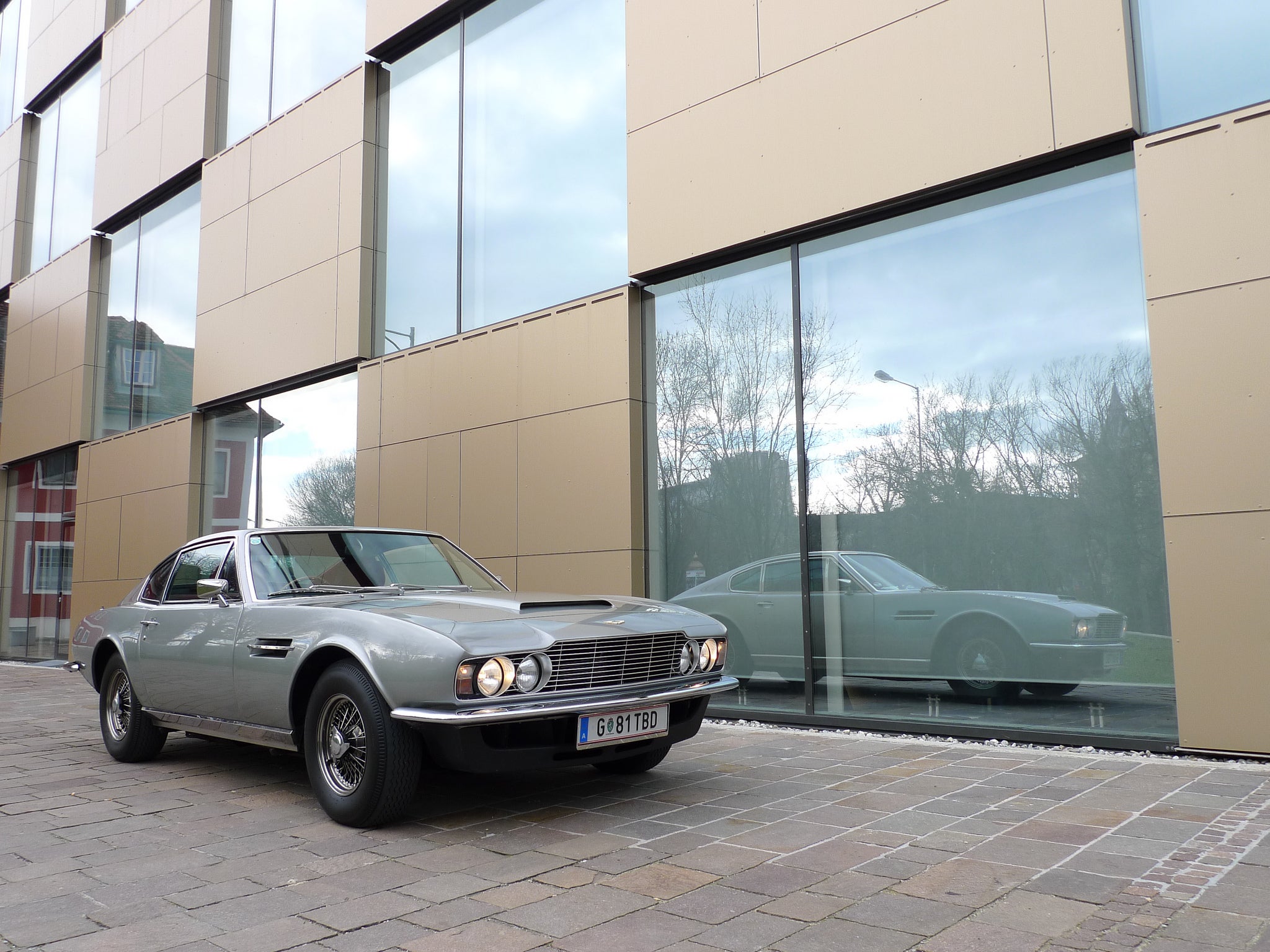


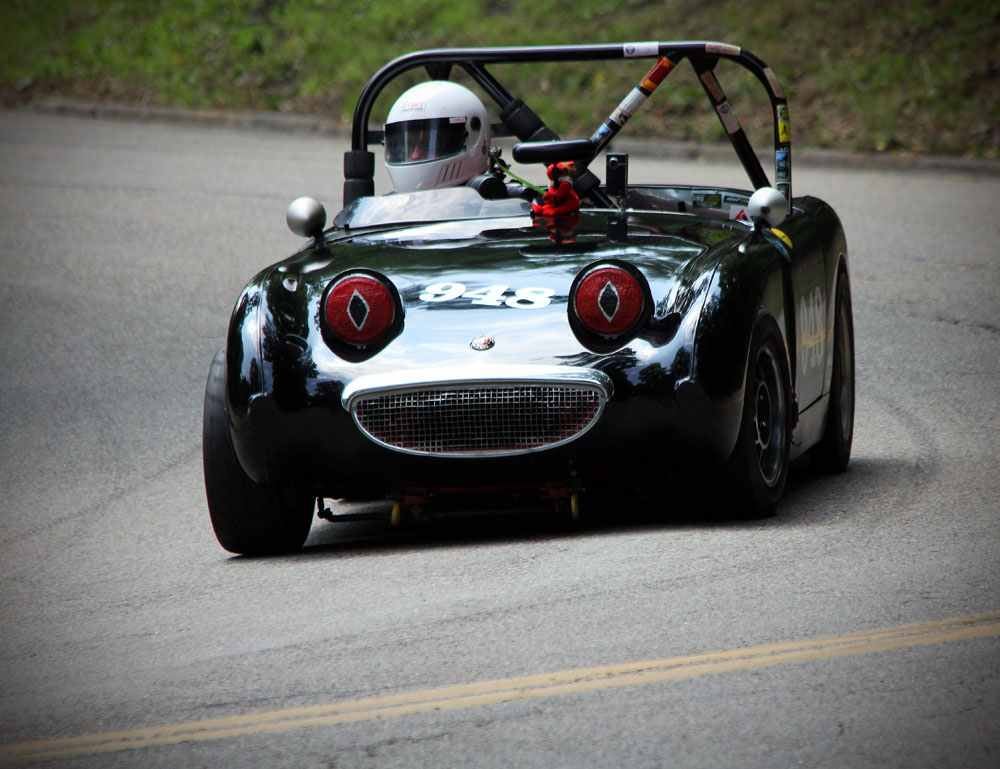










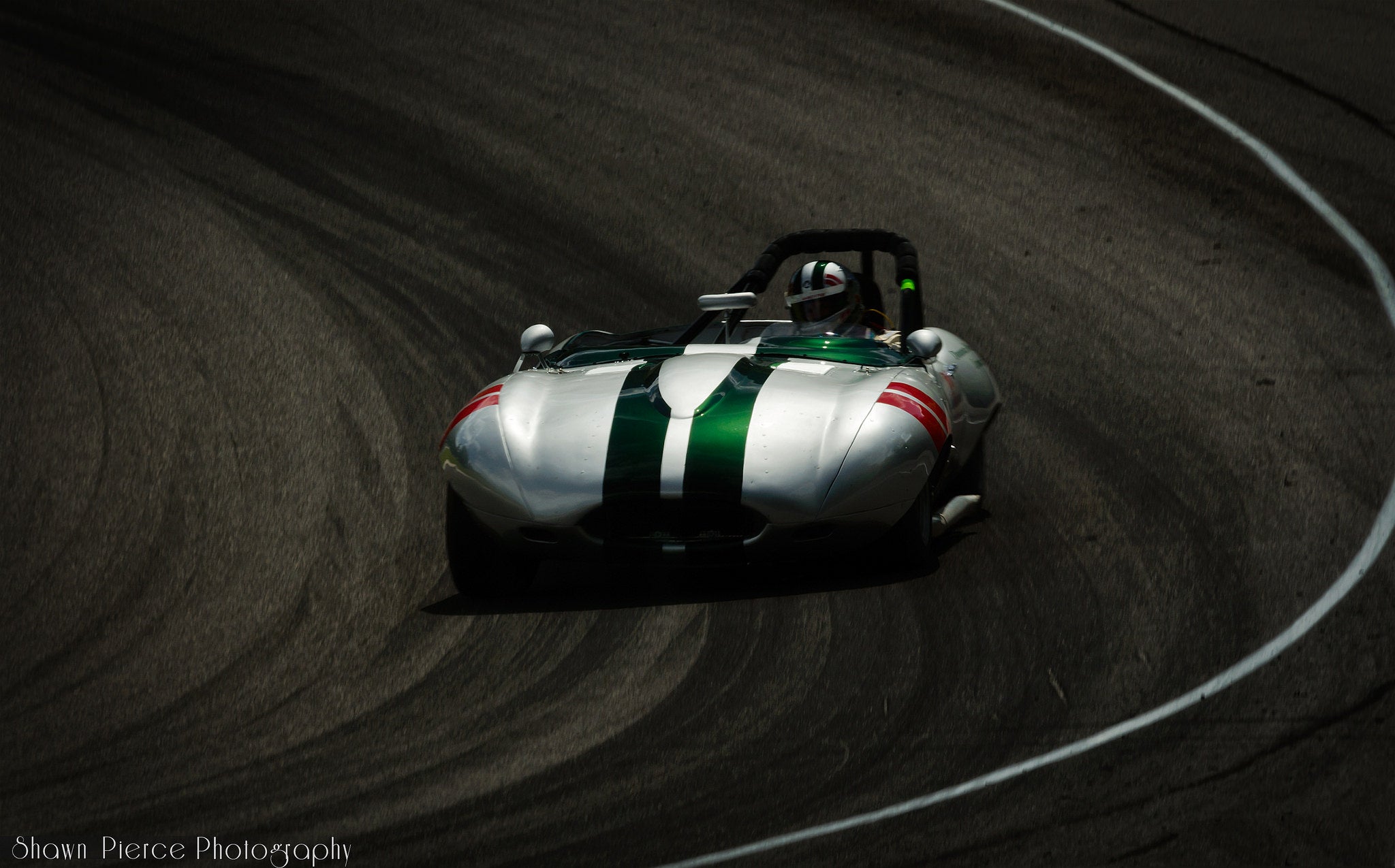





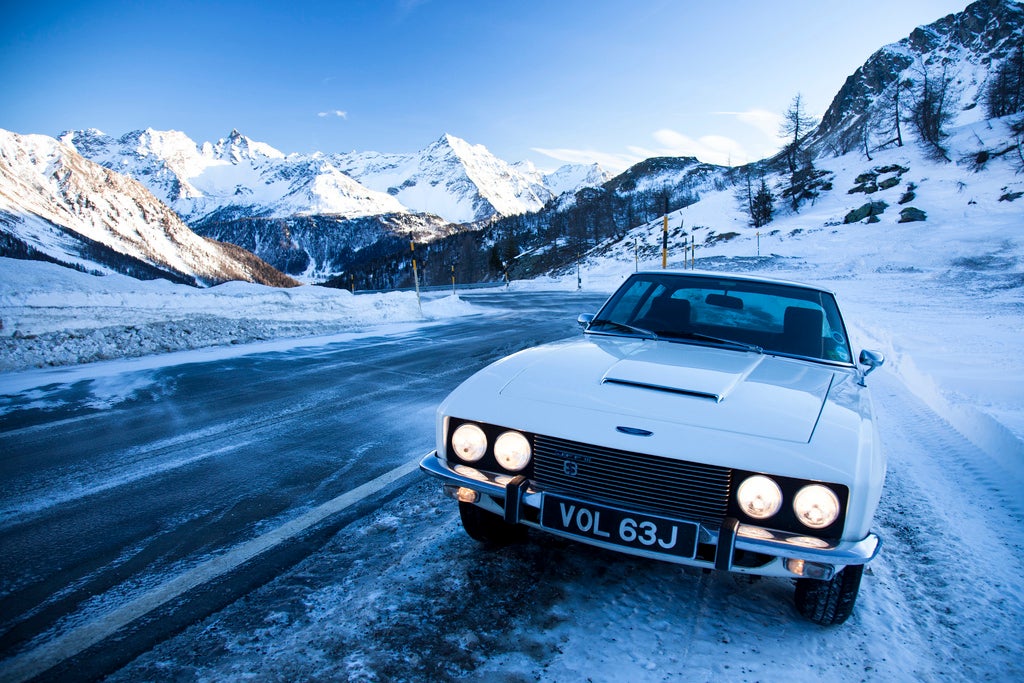





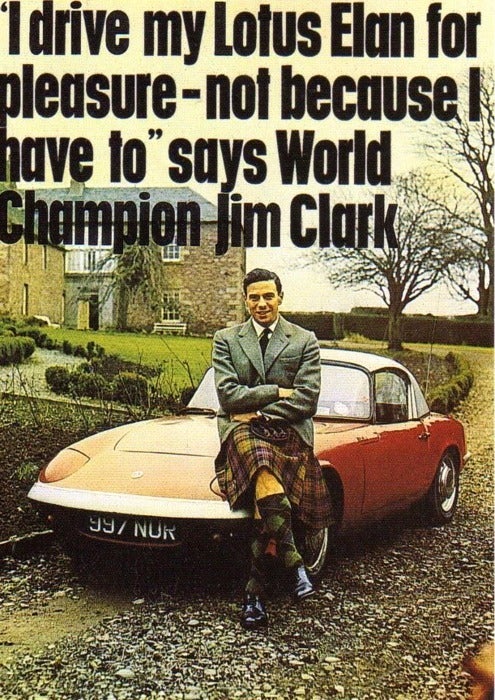






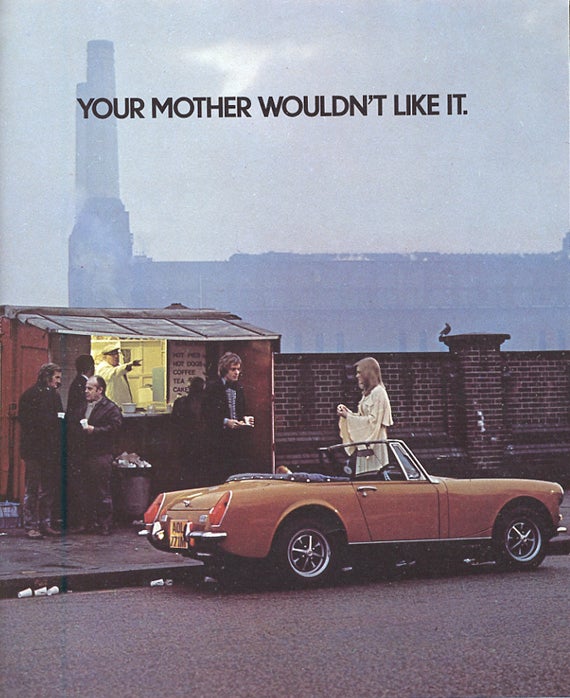


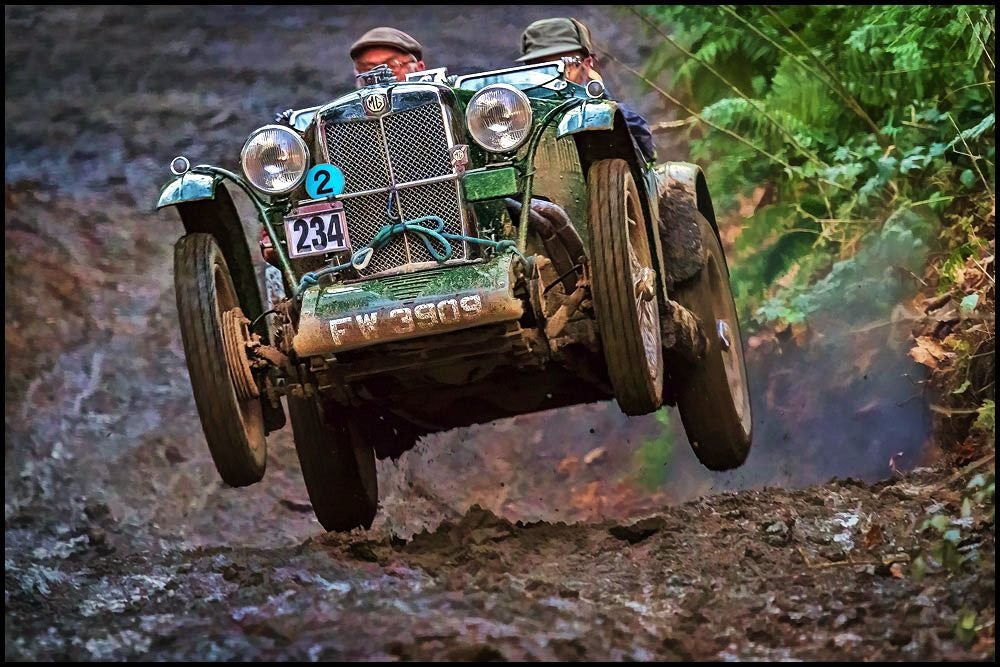

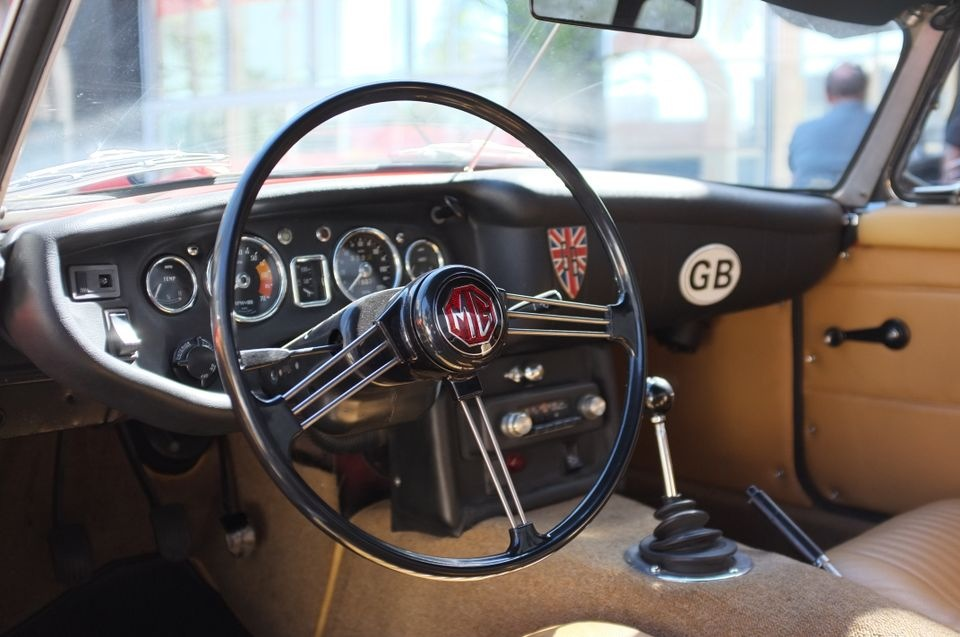


















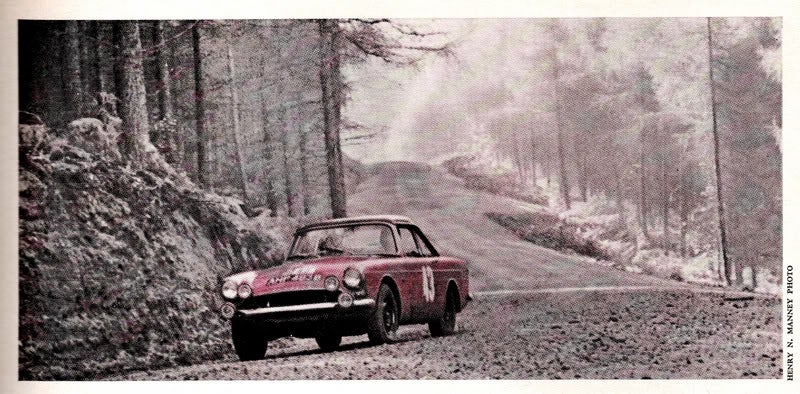














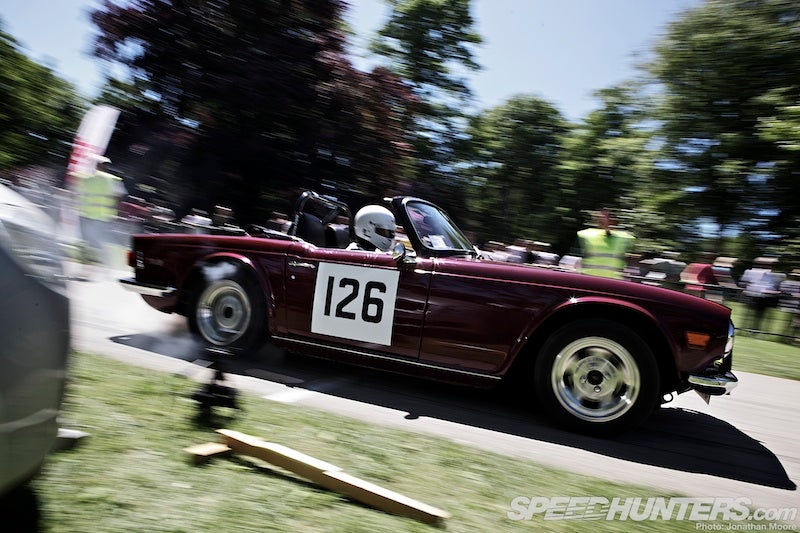



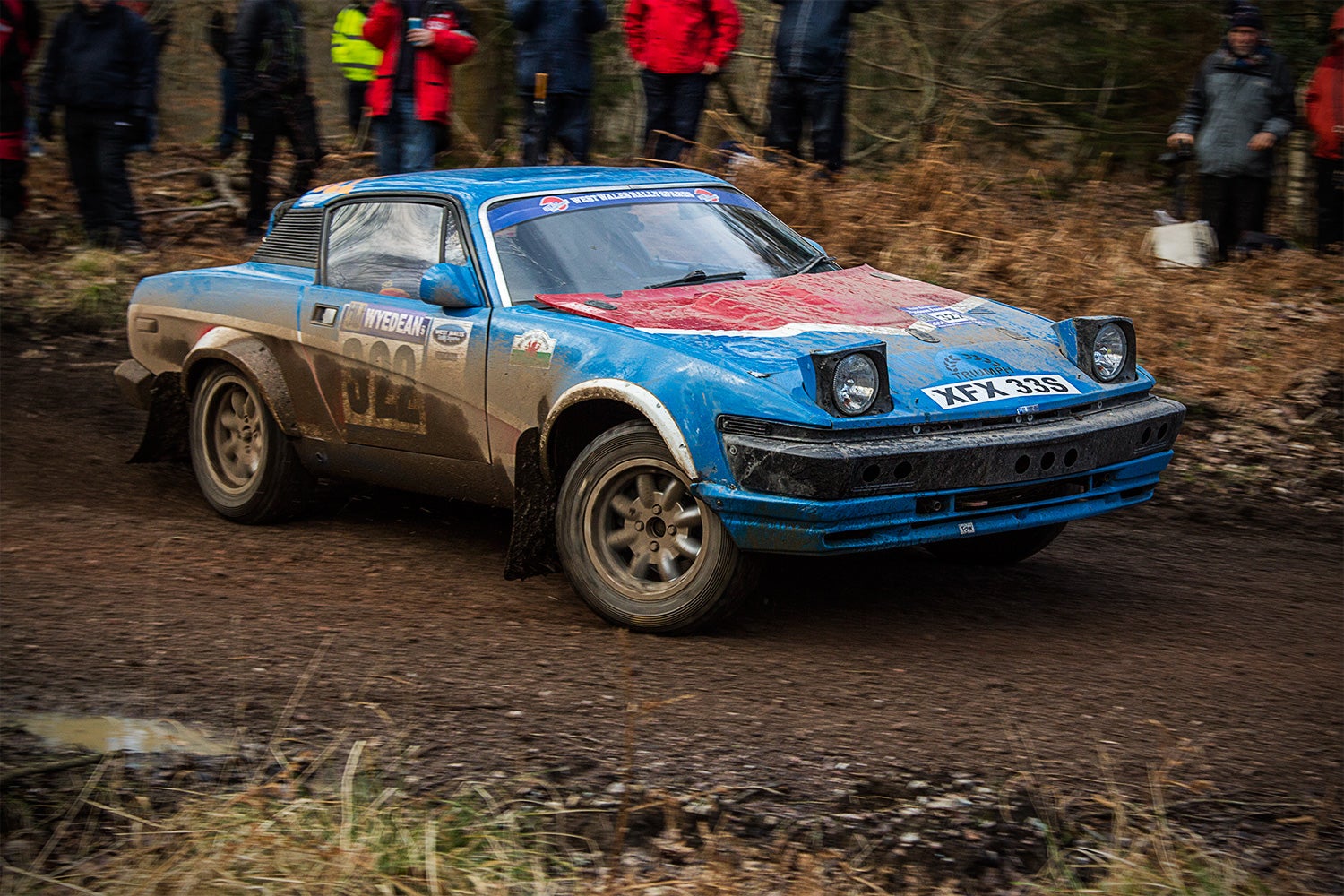


 Smallbear wants a modern Syclone, local Maple Leafs spammer
> BiTurbo228 - Dr Frankenstein of Spitfires
Smallbear wants a modern Syclone, local Maple Leafs spammer
> BiTurbo228 - Dr Frankenstein of Spitfires
05/27/2016 at 10:43 |
|
Me.
 Honeybunchesofgoats
> BiTurbo228 - Dr Frankenstein of Spitfires
Honeybunchesofgoats
> BiTurbo228 - Dr Frankenstein of Spitfires
05/27/2016 at 10:45 |
|
and this one, which I canít find a video for:
Sir Humphrey : Minister, Britain has had the same foreign policy objective for at least the last five hundred years: to create a disunited Europe. In that cause we have fought with the Dutch against the Spanish , with the Germans against the French , with the French and Italians against the Germans , and with the French against the Germans and Italians . Divide and rule, you see. Why should we change now, when itís worked so well? Hacker : Thatís all ancient history, surely? Sir Humphrey : Yes, and current policy. We Ďhadí to break the whole thing [the EEC ] up, so we had to get inside. We tried to break it up from the outside, but that wouldnít work. Now that weíre inside we can make a complete pigís breakfast of the whole thing: set the Germans against the French, the French against the Italians, the Italians against the Dutch... The Foreign Office is terribly pleased; itís just like old times. Hacker : But surely weíre all committed to the European ideal? Sir Humphrey : [chuckles] Really, Minister. Hacker : If not, why are we pushing for an increase in the membership? Sir Humphrey : Well, for the same reason. Itís just like the United Nations , in fact; the more members it has, the more arguments it can stir up, the more futile and impotent it becomes. Hacker : What appalling cynicism. Sir Humphrey : Yes... We call it diplomacy, Minister.
 Party-vi
> BiTurbo228 - Dr Frankenstein of Spitfires
Party-vi
> BiTurbo228 - Dr Frankenstein of Spitfires
05/27/2016 at 10:47 |
|

This XKE is rocking a Chevy 383, which is probably why it still runs :P
 BiTurbo228 - Dr Frankenstein of Spitfires
> Party-vi
BiTurbo228 - Dr Frankenstein of Spitfires
> Party-vi
05/27/2016 at 10:49 |
|
Yeah I thought Iíd sneak that one in to see if anyone noticed ;)
I like it though as it's one of the few people I've seen actually doing something different with an E-Type.
 BiTurbo228 - Dr Frankenstein of Spitfires
> Smallbear wants a modern Syclone, local Maple Leafs spammer
BiTurbo228 - Dr Frankenstein of Spitfires
> Smallbear wants a modern Syclone, local Maple Leafs spammer
05/27/2016 at 10:50 |
|
You're Charles De Gaulle?!
 BiTurbo228 - Dr Frankenstein of Spitfires
> Honeybunchesofgoats
BiTurbo228 - Dr Frankenstein of Spitfires
> Honeybunchesofgoats
05/27/2016 at 10:52 |
|
Hah :) absolutely brilliant
I must watch more of these I think
 Smallbear wants a modern Syclone, local Maple Leafs spammer
> BiTurbo228 - Dr Frankenstein of Spitfires
Smallbear wants a modern Syclone, local Maple Leafs spammer
> BiTurbo228 - Dr Frankenstein of Spitfires
05/27/2016 at 10:53 |
|
Apparently.
 Honeybunchesofgoats
> BiTurbo228 - Dr Frankenstein of Spitfires
Honeybunchesofgoats
> BiTurbo228 - Dr Frankenstein of Spitfires
05/27/2016 at 11:10 |
|
It's easily one of my favorite tv shows of all time.
 xyzabc
> BiTurbo228 - Dr Frankenstein of Spitfires
xyzabc
> BiTurbo228 - Dr Frankenstein of Spitfires
05/27/2016 at 11:30 |
|
This was a major factor: 2Fe + O2 -> Fe2O3
 BiTurbo228 - Dr Frankenstein of Spitfires
> xyzabc
BiTurbo228 - Dr Frankenstein of Spitfires
> xyzabc
05/27/2016 at 11:34 |
|
Moreso for Italians who got their steel from even cheaper sources!
 Jobjoris
> BiTurbo228 - Dr Frankenstein of Spitfires
Jobjoris
> BiTurbo228 - Dr Frankenstein of Spitfires
05/27/2016 at 12:52 |
|
I can relate to this a bit, interesting theory. But in the end you canít blame just De Gaulle. Or the French in general. Better lobbying, better cars/strategy (why not open a factory on the continent or move production to India/Malaysia?) and better work ethics (sorry) could have contributed to a more happy ending for BL. It is a shame BL ainít around anymore though. Looking at all these epic cars you put on display makes that all too clear.
 BiTurbo228 - Dr Frankenstein of Spitfires
> Jobjoris
BiTurbo228 - Dr Frankenstein of Spitfires
> Jobjoris
05/27/2016 at 13:23 |
|
Yeah I understand that, itís just something I hadnít known about before and was the first trigger that knocked a healthy company off its game. From that point onwards they were always playing catchup.
There are tons of opportunities to pull themselves back up that were missed. Some because they werenít seen, some where they were at fault, some where they werenít.
For instance, they had a deal selling CKD kits, especially Minis, to Innocenti for European markets. CKD kits were still taxed, but not nearly as heavily. With hindsight, they should have bought Innocenti outright, shipped some tooling out there and started cranking out Minis for the European market from inside Europe they could have mitigated the effects of being stuck outside of the EEC.
Unfortunately, that would have sounded like a waste of money before the bid in Ď63, and even after as the government promised that they would be in in a year or two, so that wasnít really their fault.
However, the gradual withdrawal from the commonwealth markets was definitely something they could have stopped and didnít. Leyland Aus was doing steady business with very strapped capital. If theyíd invested a bit more there (and in the US) theyíd have had something to lean on while times were tough in the UK.
Actually, speaking about the US another little tidbit I picked up which probably cxontribted to their fall as well was that by the mid 70s the exchange rates between the US and the UK meant that they were barely making profit on MGBs sold to the US at all. Not hard to see why they didnít replace it as thatís where the majority of them were going (although again, a mistake in hindsight).
 Jobjoris
> BiTurbo228 - Dr Frankenstein of Spitfires
Jobjoris
> BiTurbo228 - Dr Frankenstein of Spitfires
05/27/2016 at 13:40 |
|
Great analysis. And totally true. One other aspect: even american funding of Chrysler Europe could not save the Rootes Group. Even more painful that ended up in French hands and ended up doing nothing more than producing Peugeots...
 CaptDale - is secretly British
> BiTurbo228 - Dr Frankenstein of Spitfires
CaptDale - is secretly British
> BiTurbo228 - Dr Frankenstein of Spitfires
05/27/2016 at 14:05 |
|
I wrote a research paper on this to go with my senior project (restoring a 69 Sprite) and compared it to the current dwindling British Automotive Manufactures. I love this topic so much.
 BiTurbo228 - Dr Frankenstein of Spitfires
> CaptDale - is secretly British
BiTurbo228 - Dr Frankenstein of Spitfires
> CaptDale - is secretly British
05/27/2016 at 14:36 |
|
Oh cool! What were the headlines?
Iíd argue that British car manufacturers have gone through a bit of a renaissance recently. I think Aston kicked it off with the DB9. It was the first car that actually made people stop and think that a British car was world-class.
Then Jag got their mojo with money from Tata and weíre away :)
 xyzabc
> BiTurbo228 - Dr Frankenstein of Spitfires
xyzabc
> BiTurbo228 - Dr Frankenstein of Spitfires
05/27/2016 at 15:36 |
|
...and those that ďsurvivedĒ live a charmed life.
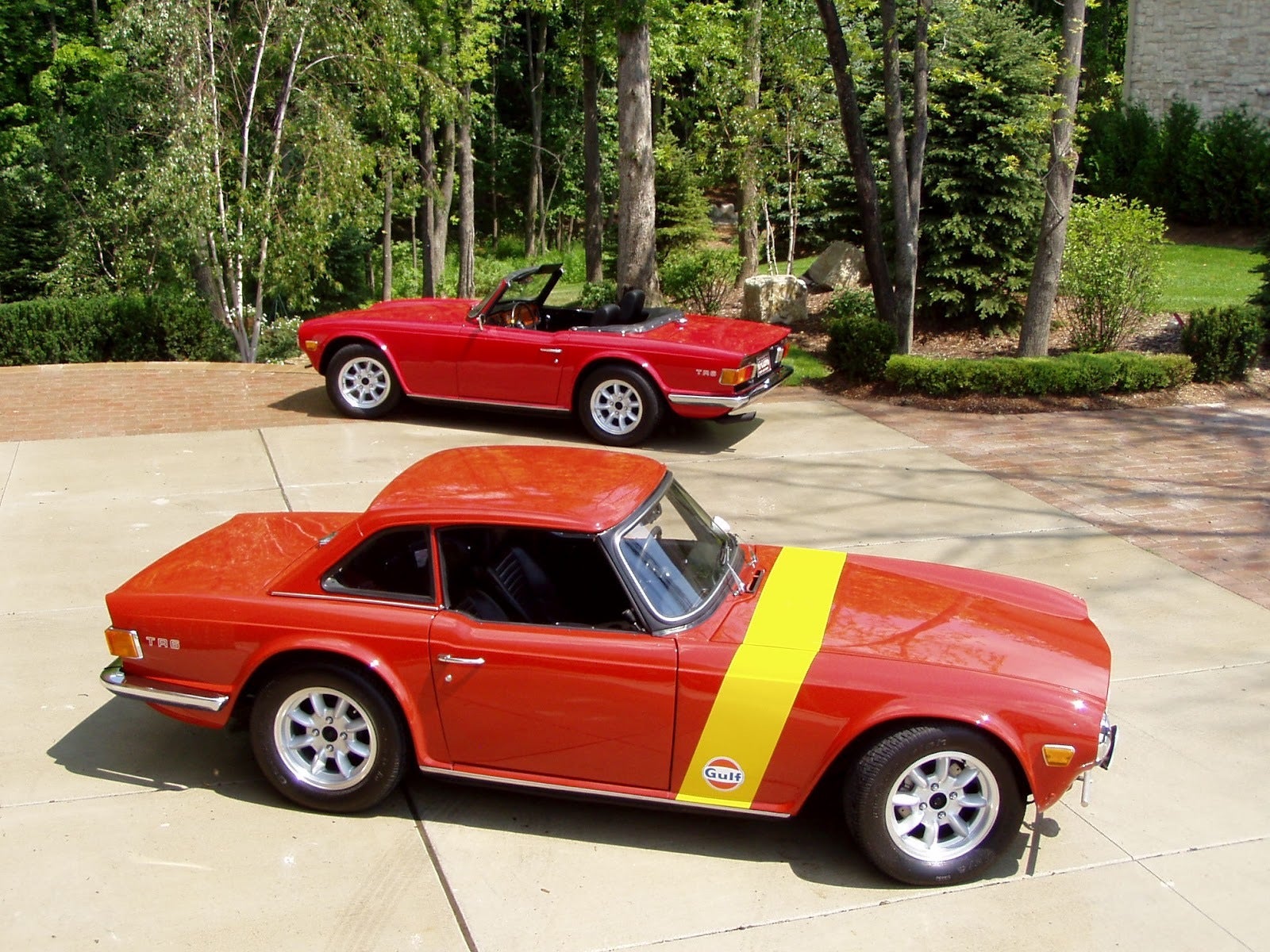
 Stephen the Canuck
> BiTurbo228 - Dr Frankenstein of Spitfires
Stephen the Canuck
> BiTurbo228 - Dr Frankenstein of Spitfires
05/27/2016 at 15:37 |
|
Lucas Electronics?
 BiTurbo228 - Dr Frankenstein of Spitfires
> Stephen the Canuck
BiTurbo228 - Dr Frankenstein of Spitfires
> Stephen the Canuck
05/27/2016 at 16:24 |
|
Definitely a contributing factor, but again Iíd point out the Vega. Crap cars sell, often as well as good cars. They just need the right market.
 BiTurbo228 - Dr Frankenstein of Spitfires
> xyzabc
BiTurbo228 - Dr Frankenstein of Spitfires
> xyzabc
05/27/2016 at 16:29 |
|
Now I like that :) they definitely should have done a hardtop version :)
 ranwhenparked
> BiTurbo228 - Dr Frankenstein of Spitfires
ranwhenparked
> BiTurbo228 - Dr Frankenstein of Spitfires
05/27/2016 at 23:24 |
|
Mismanagement and the government. The BMC merger was misguided in hindsight, but if the company had been properly managed in the 1950s, the Nuffield and Austin organizations could have been easily integrated. They needed to consolidate dealer networks, prune redundant brands, and rationalize factories - none of which was done, because the Austin and Nuffield halves of the company were still fiercely territorial and neither wanted to been seen as caving in to the other, so BMC stumbled on as an ungovernable mess.
Jaguar Cars got hitched to BMC because Lyons felt he had no choice, after the bigger company bought Pressed Steel, he was afraid they could strong arm Jaguar out of business. Iím not sure, exactly, what BMC wanted out of it, except obviously that Jaguar was a stronger brand than Wolseley or Riley. But, BMH was one merger too many, and the company was pretty much unsalvageable outside of administration from that point on.
Until then, it was incompetent managers, ineffective boards, and complacent shareholders that let it all happen. The British Leyland merger was where the government got involved and pressured those two to join up, hoping that the smaller but prosperous Leyland would prop up the ailing BMH and prevent a disorderly collapse that would require government assistance. Also, there was the belief that the British domestic industry needed one giant company that could more directly rival the big foreign firms and BL would create that. The same problems that had been playing out under BMC since the Ď50s kept going on under BL - too many brands, too many factories, too large of a workforce, too many dealers, and massive decentralization with the disparate parts of the company failing to work properly with each other.
Obviously, redundancies were the last thing the government wanted when BL was created, so even if they had had the right management in place in the late Ď60s, itís doubtful that they would have been allowed to do much of what was needed to get the company on a sounder footing.
 Stephen the Canuck
> BiTurbo228 - Dr Frankenstein of Spitfires
Stephen the Canuck
> BiTurbo228 - Dr Frankenstein of Spitfires
05/27/2016 at 23:53 |
|
I really like the current Jaguars. Iím not in a position to be shopping that market yet though.
I was joking about the Lucas thing, but definitely reliability issues did not help.
 BiTurbo228 - Dr Frankenstein of Spitfires
> Stephen the Canuck
BiTurbo228 - Dr Frankenstein of Spitfires
> Stephen the Canuck
05/28/2016 at 04:22 |
|
Yeah I know :) thereís plenty to poke fun about with 70s Brit cars ;)
And yeah, reliability issues was probably the killer during the 70s, just as the Japanese and Germans were moving in with cars that were significant more reliable.
 BiTurbo228 - Dr Frankenstein of Spitfires
> ranwhenparked
BiTurbo228 - Dr Frankenstein of Spitfires
> ranwhenparked
05/28/2016 at 05:19 |
|
All absolutely true, and most definitely contributed more than the European element.
I do think that they could have pulled through if they could have sold on the continent though. Plenty of poorly managed companies in the 70s have had a bit of a revolution (GMís a prime candidate).
Personally, the tipping point for me was the merger with Leyland. If the government had left well alone then the unmanageable behemoth of BMC would have gone under. Leyland could have sifted through the wreckage and pulled out the few choice factories it needed, the few choice designs that were popular sellers, kept the few engineers that were visionary and kept the staff that it required.
Then the government could have stepped in and taken over what was left after that process if they really wanted to save jobs. Who knows, they might have actually made something out of the carcass of BMC. If not then hey ho, at least something good would have survived (Rover, Triumph, Jaguar and the best bits of BMC: Issigonisí ADO16 and mini plus the hydragas system).
Ah well, canít change it now...
 xyzabc
> BiTurbo228 - Dr Frankenstein of Spitfires
xyzabc
> BiTurbo228 - Dr Frankenstein of Spitfires
05/28/2016 at 10:38 |
|
Triumph did offer one as an option. (As shown in the above photo.) Steel with 3-Window Glass and fabric-stretched headliner. Mounted via Four (4) locations to the Body and Two (2) to the Window Frame top. Stiffened-up the Body and was great for long road trips in cooler / Fall weather.
 BiTurbo228 - Dr Frankenstein of Spitfires
> xyzabc
BiTurbo228 - Dr Frankenstein of Spitfires
> xyzabc
05/28/2016 at 10:45 |
|
Yeah Iíve got a similar one with my Spitfire. What I think was missing is a proper fixed-head version with it welded solidly to the body aí la GT6.
I would have been a matter of sticking a couple of tack welds in place of some brackets so would have been very simple to sort out manufacturing-wise and would have broadened the market slightly.
 Berang
> BiTurbo228 - Dr Frankenstein of Spitfires
Berang
> BiTurbo228 - Dr Frankenstein of Spitfires
05/29/2016 at 19:55 |
|
Interesting, but from an American perspective itís easy to see the british companies just didnít put a lot of effort into selling to Americans. The Morris Minor could easily have been a major contender alongside the VW beetle. If Americans would buy so many Renault Dauphines, why wouldnít they buy Minors? But look back and the cars had pretty much no advertising, scant dealer support, and no aftermarket support - even in comparison to Renault who fatally under-supported the Dauphine, cursing the brand in the U.S. for eternity. The Minor could have been the 1950s equivalent of Toyotaís 1960's Corona to American buyers.
I think it shows some incredible short sighted business decisions. British sports cars sold well and were respected in the U.S. - plus they had high profit margins, something the Minor couldnít have. But you canít base your brand image around sports cars. They probably didnít know that then, but itís apparent now. So when they tried to sell regular cars here, they ran into a marketing problem. Austin 1100? Is that a sports car? What? And an Austin Marina? (Americans had already forgotten Morris existed since the Minor exited the market) Are these supposed to be sporty? What are they? Thing is people looking for an economy car didnít go to Austin or Triumph dealers, they had no reputation for making economy cars in the U.S.
There was so much success to be had so easily, and they let it slip right through their fingers.
 BiTurbo228 - Dr Frankenstein of Spitfires
> Berang
BiTurbo228 - Dr Frankenstein of Spitfires
> Berang
05/29/2016 at 20:09 |
|
Thatís a very interesting perspective. I also think they criminally underused the commonwealth markets (Australia in particular).
So much about Rover fitted itself perfectly into the Australian market. Sturdily built, V8 saloon cars. Triumph was popular down there too.
Iíd say the US in the 60s was one of the few places you could genuinely base your entire lineup on sporting pretensions. Datsun did it with the 510 and the 240Z, and BMW with the 2002 and Bavaria.
Youíre absolutely right that BMC/Leyland didnít do it right though. They should have brought over the Minor as a Beetle competitor (small, odd looking, frugal. Basically the anti-Detroit in car form). More than that they should have brought over more cars that backed up their sports cars. Things like Triumph 2000s and Dolomites so people could trade in their TR6s on something that still had a bit of verve when they had kids.
 Berang
> BiTurbo228 - Dr Frankenstein of Spitfires
Berang
> BiTurbo228 - Dr Frankenstein of Spitfires
05/29/2016 at 20:26 |
|
Triumph did bring over their sedans, but they werenít marketed. We got the 2000, the Herald, the Mayflower. And theyíre all incredibly rare in the U.S. today.
 BiTurbo228 - Dr Frankenstein of Spitfires
> Berang
BiTurbo228 - Dr Frankenstein of Spitfires
> Berang
05/30/2016 at 06:20 |
|
Huh, never knew that (and by the sounds of things neither did the majority of Americans!).
They could definitely have done a better job marketing them. They could have formed a US company and opened a factory over there like they did in Australia and mitigated against fluctuations of currency. Plus, theyíd get some local input into marketing which is why Datsun really succeeded :)
 Berang
> BiTurbo228 - Dr Frankenstein of Spitfires
Berang
> BiTurbo228 - Dr Frankenstein of Spitfires
05/30/2016 at 15:39 |
|
Weird thing is Austin built all of the Nash Metropolitans, and while sales werenít exactly booming they sold decently for an import at the time. So it should have been apparent that with a product aimed at American tastes, and some marketing, it was possible to sell a small sedan/coupe in the U.S. in decent numbers. Instead the Japanese came in and did that ten years later and took over the import market.
 BiTurbo228 - Dr Frankenstein of Spitfires
> Berang
BiTurbo228 - Dr Frankenstein of Spitfires
> Berang
05/31/2016 at 06:04 |
|
Huh, I didnít know that. I expect thatís where Healey got access to the Nash engine from for their Nash-Healeys.
I definitely think if I had a time machine I'd go back to the late 50s and bloody well sort out the mess at the time. With a bit of a steer there would be so much potential.
 Green Mountain Car Guy
> BiTurbo228 - Dr Frankenstein of Spitfires
Green Mountain Car Guy
> BiTurbo228 - Dr Frankenstein of Spitfires
06/01/2016 at 14:12 |
|
Yay! Vermont plate on that Land Rover!